5 Lobe Viking Sword (#1540)
The British Museum in London.
800-950 AD
A distinctive, instantly recognizable design, the 5 Lobe Viking Sword is our modern remake of a classic blade. Inspired by the simple yet well-made work of the Norse smiths, the clean lines and subdued fittings of the 5 Lobe Viking Sword mark it as a weapon of a seasoned Viking warrior, not a king or a lord. Yet even this deceptively simple weapon shows the signs of the generations of steelcraft that made the Viking raiders so formidably armed. A wide, straight, double-edged blade adorned with a broad fuller and terminating in a spatulate tip marks it as a Norse weapon, the family resemblance to other Viking swords clearly apparent. The leather-wrapped handle provides a comfortable grip, and the polished steel fittings – including the 5-lobed pommel that gives this sword its name – are powerful, yet subtle. A weapon for a warrior on the front lines, the 5 Lobe Viking Sword will serve you well wherever your voyages take you.
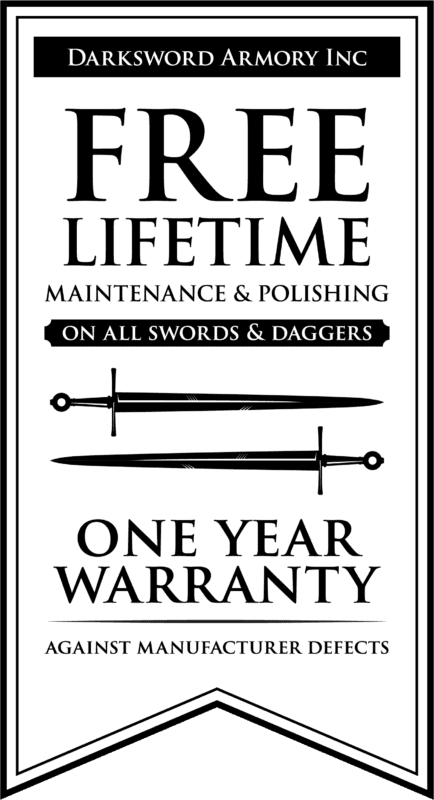 Blade: 5160 High Carbon Steel. Dual Tempered HRc 60
Blade: 5160 High Carbon Steel. Dual Tempered HRc 60
48-50 at the core
Fittings : Mild Steel
Total Length: 36″
Blade Length : 30″
Weight: 2 lbs. 8 oz.
580.00 USD – 735.00 USD
The British Museum in London.
800-950 AD
One of the most coveted medieval swords among collectors is the Viking sword. Given the multitude of Viking swords on the market, one wonders whether the market is saturated. Many reproductions, however, play into the stereotype of Viking swords as little more than long cleavers – heavy, brutish weapons wielded by a brutal people. These reproductions fail to capture the spirit or “function” of the Viking sword as an important step in the evolution of the European medieval swords, from earlier Romanesque styles to the arming swords of late medieval period.
A descendant of the Roman spatha, a longsword used by Roman officers, the Viking sword is a fascinating piece of history. Even during the Roman Empire steel, and the skill needed to forge long blades that were strong and resilient, was extremely expensive. Cheaper and nearly as effective were axes, Spears, or short-bladed swords such as the Gladius. However, advancements in technology and smithcraft allowed for the development of longer and more robust blades that could be made thinner than was previously possible. This meant less steel was needed to produce a sword, and though they remained expensive the ongoing development put swords in the hands of many a warrior across Europe. Central to this development was the Frankish Empire, specifically during the Carolingian era (9th century CE). The best weapons in Europe during the Viking age were produced in the Frankish Empire, and through trade and as a result of raids made their way into the hands of the Viking Raiders. Eventually, the Norse smiths themselves began to copy the techniques developed during the Frankish Empire, building on previous knowledge to produce their distinctive designs.
These distinctive designs stand apart from the later Medieval styles that were to follow, and can be uniquely categorized as a result. The most authoritative typology of the Viking swords was written by Dr. Jan Peterson in 1919. Focusing on variations in pommel and guards to formulate a 26 category scheme, Jan Perterson created a typological reference to determine the date of each subtype.
The five lobed Viking battle ready sword is the quintessential Norse weapon during the Viking age. The blade has the distinctive wide fuller and spatulate tip typical of designs from the Viking era. While using a Type 4 blade from the Geibig Typology, we fitted the five lobe Viking medieval sword with an extended handle that is long enough for both “hammer” and “handshake” grip.
The type 4 blade, found from the mid-tenth century through the mid-eleventh century, features a slight taper and a fuller which extends the blade’s full length. We carefully crafted this Viking medieval sword to reflect the Norse cultural and artistic heritage. Exceptional tools of war, the Viking medieval swords also attest to the Viking culture’s keen interest in art and aesthetic beauty. This Viking battle ready sword features a 30 inch blade, forged with 5160 High Carbon Steel and dual hardened. A simple yet elegant weapon, worthy of warriors and kings.
Blade: 5160 High Carbon Steel. Dual Tempered HRc 60
48-50 at the core
Fittings : Mild Steel
Total Length: 36″
Blade Length : 30″
Weight: 2 lbs. 8 oz.
4 reviews for 5 Lobe Viking Sword (#1540)
Add a review Cancel reply
This site uses Akismet to reduce spam. Learn how your comment data is processed.
Related products
Medieval Swords
Broadsword
Arming Swords
Broadsword
Fantasy Swords
Fantasy Swords
Medieval Swords
Medieval Swords
Broadsword
Broadsword
Fantasy Swords
Medieval Swords



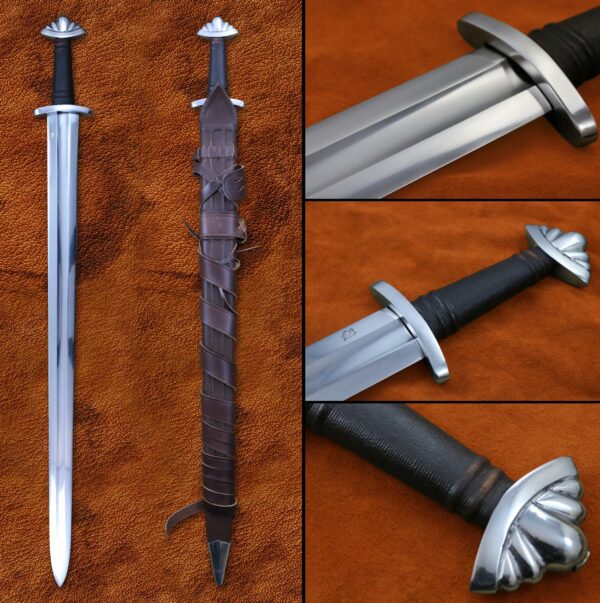
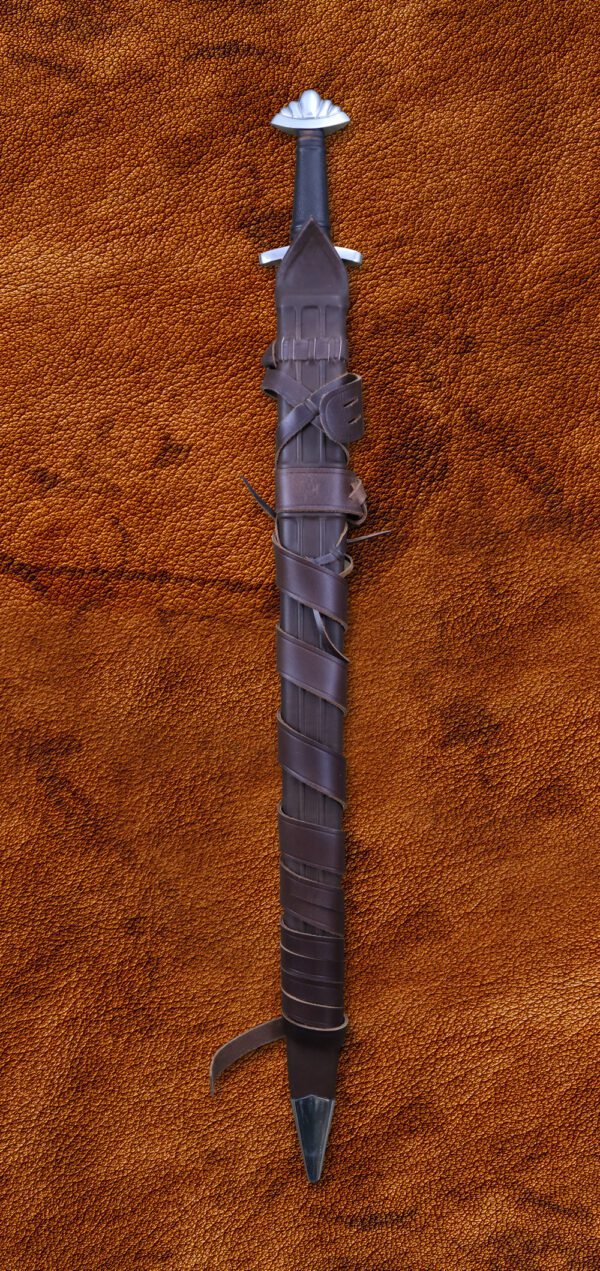
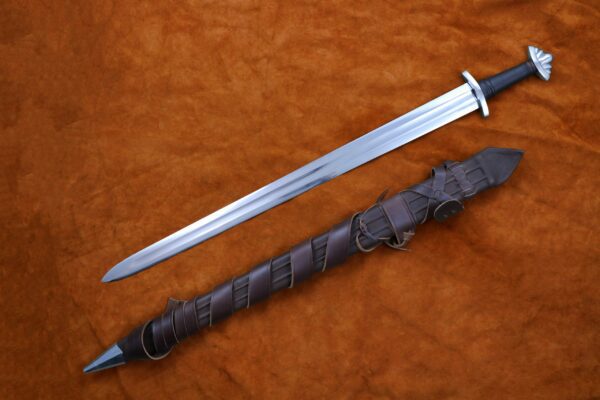
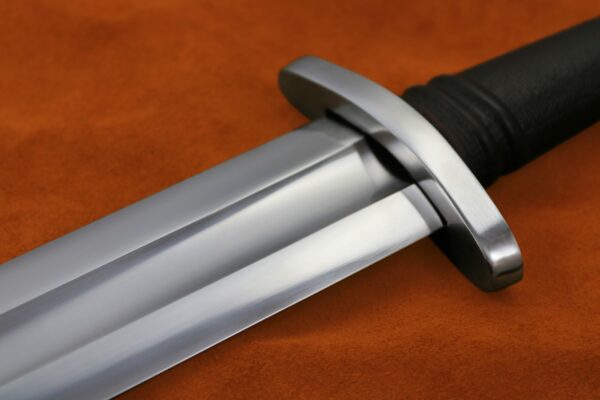







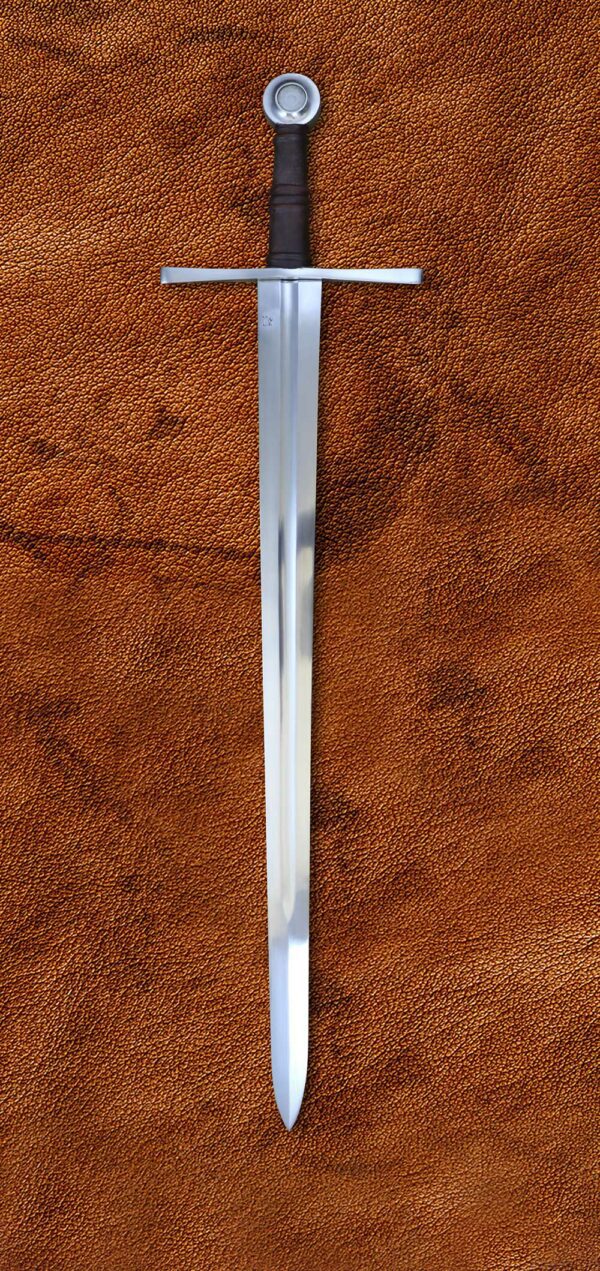
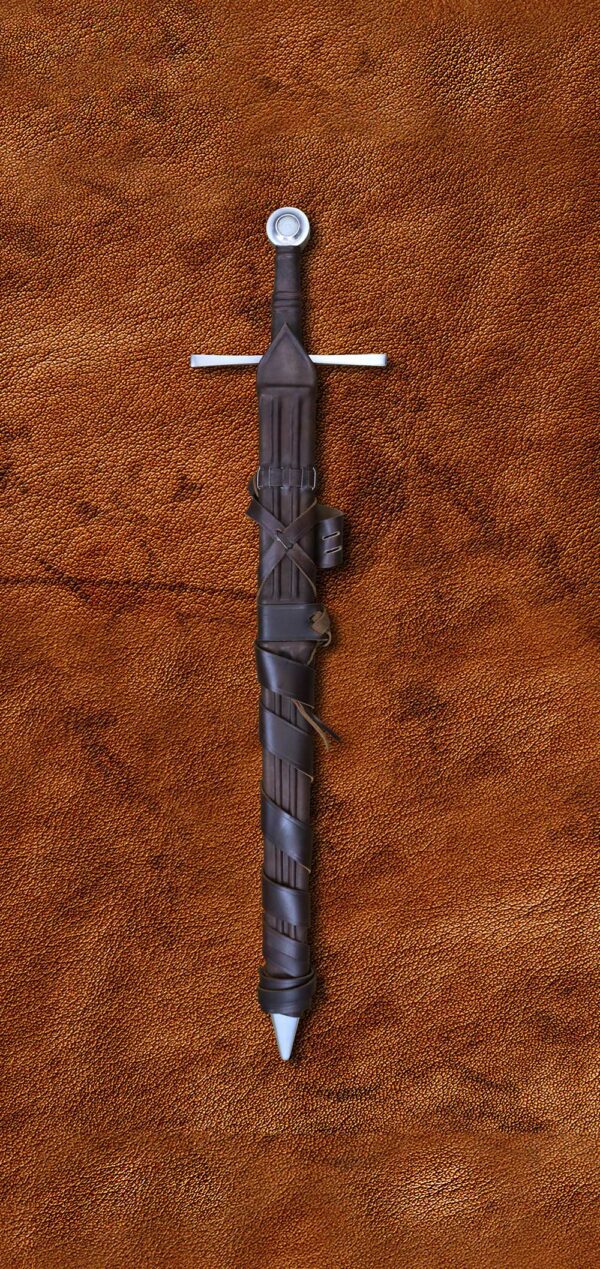
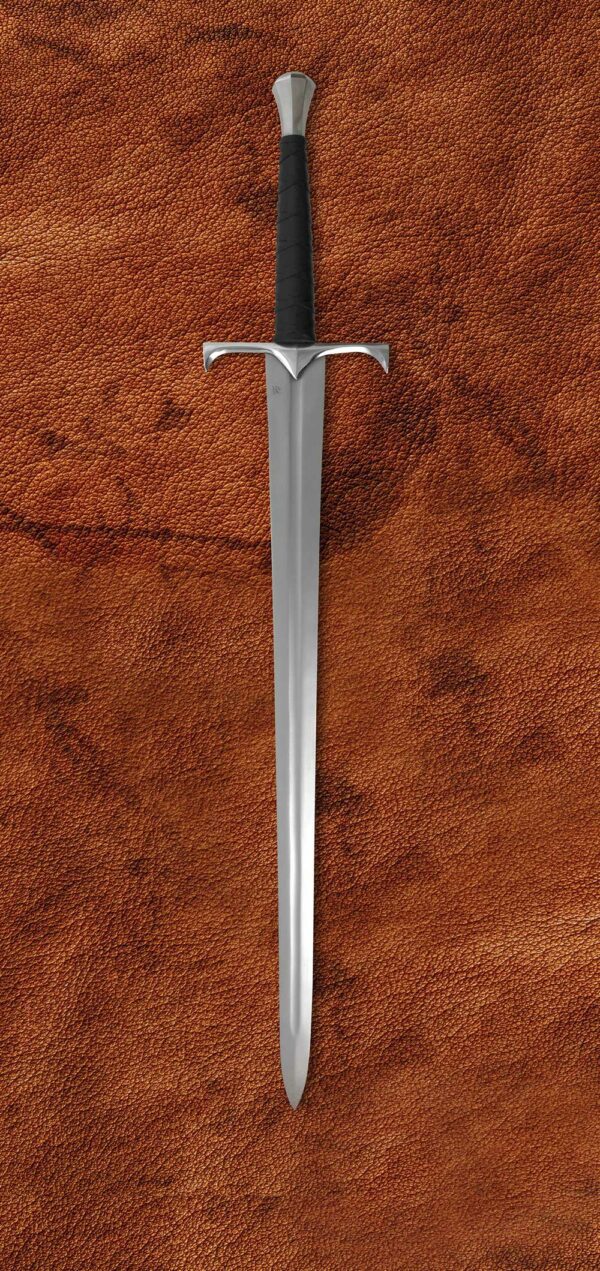
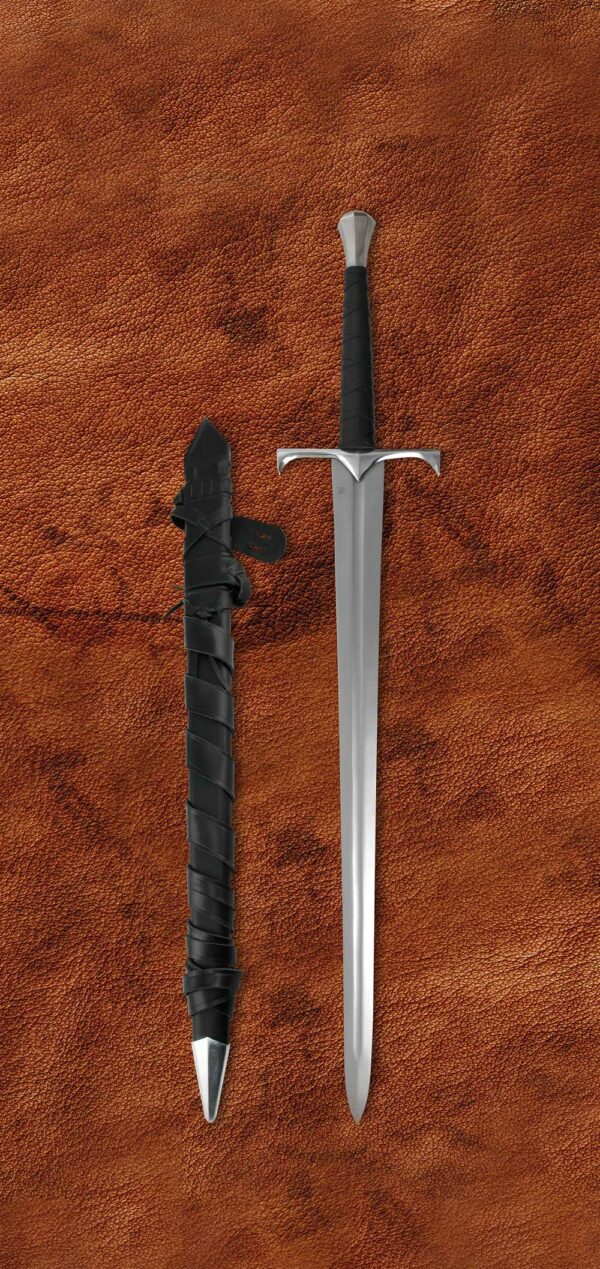
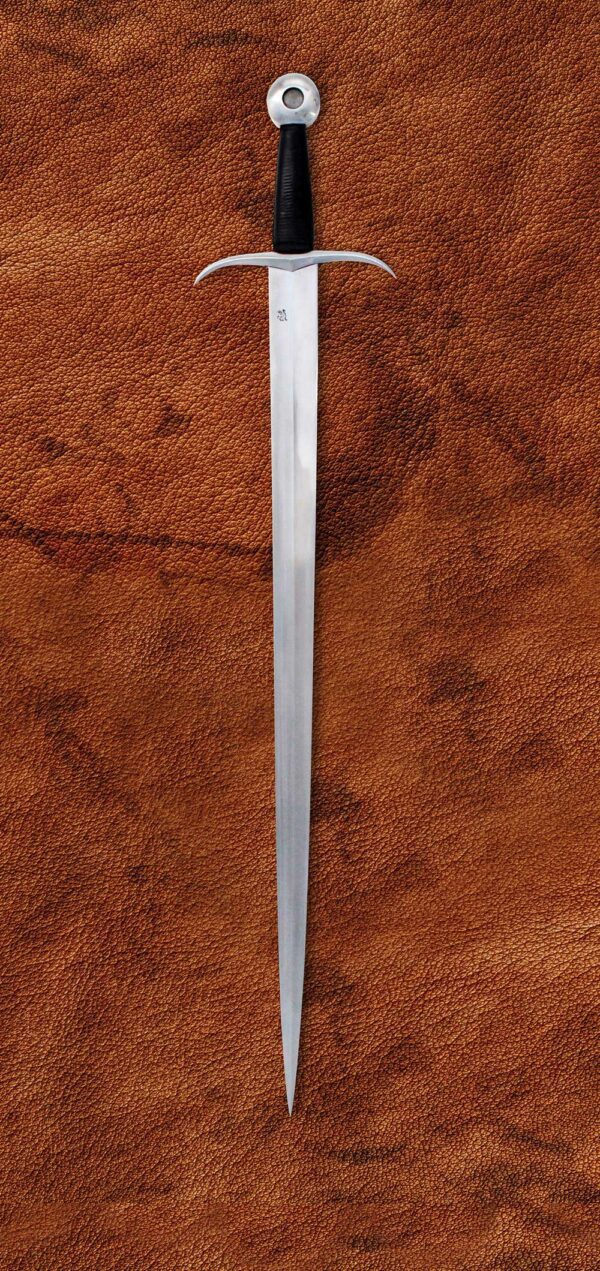
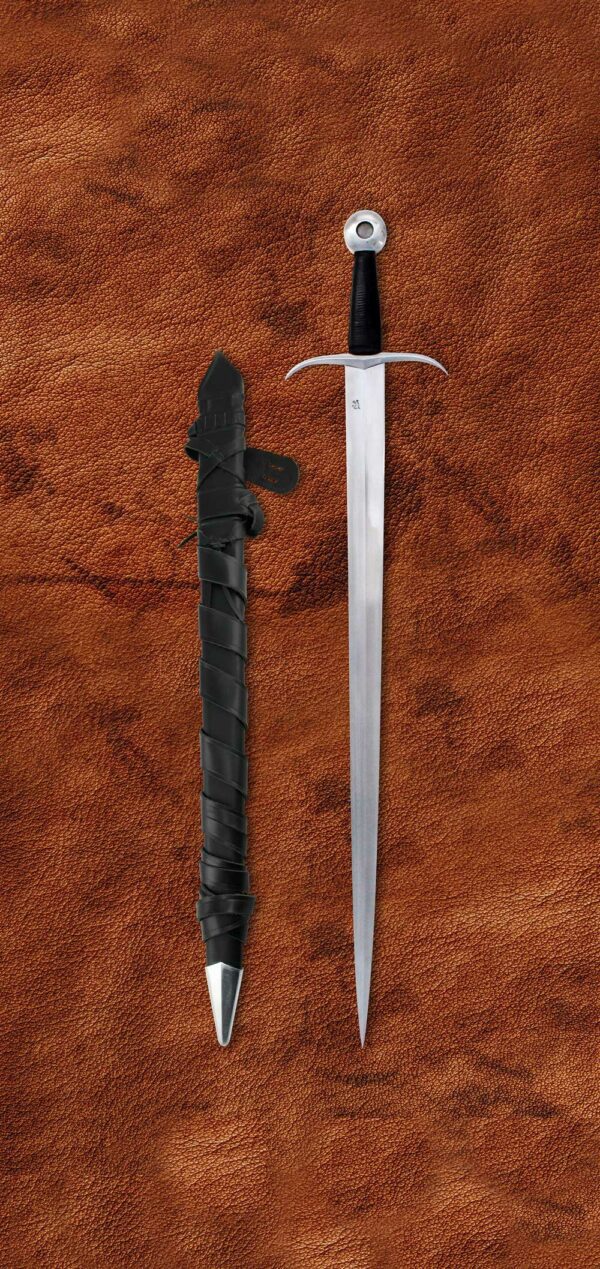
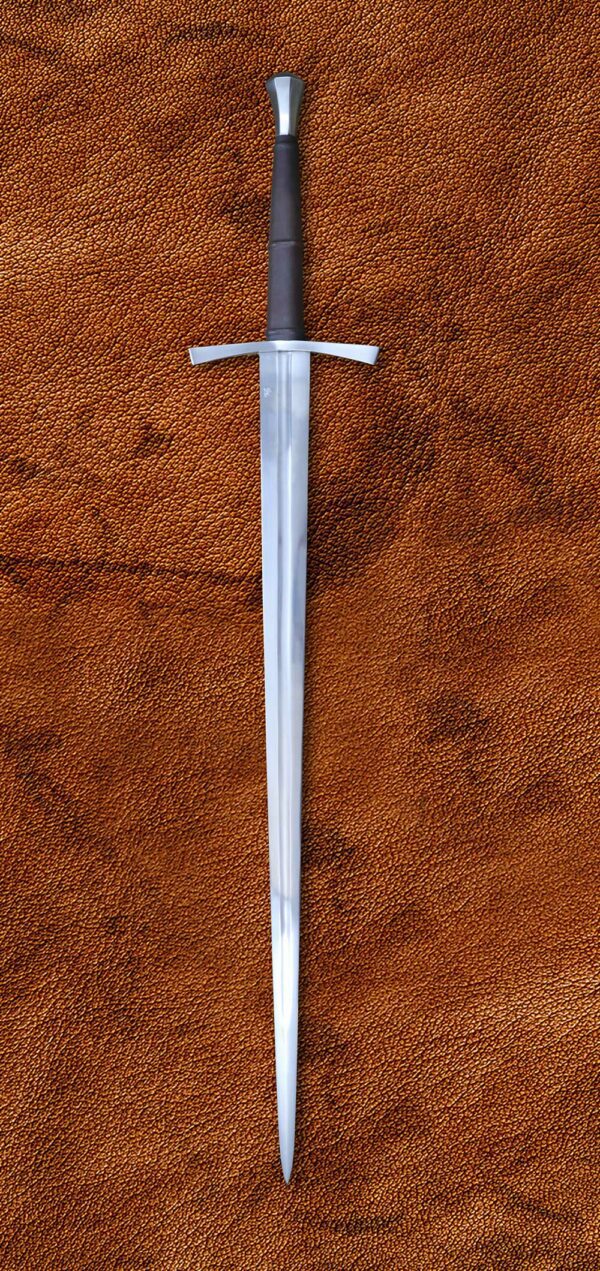
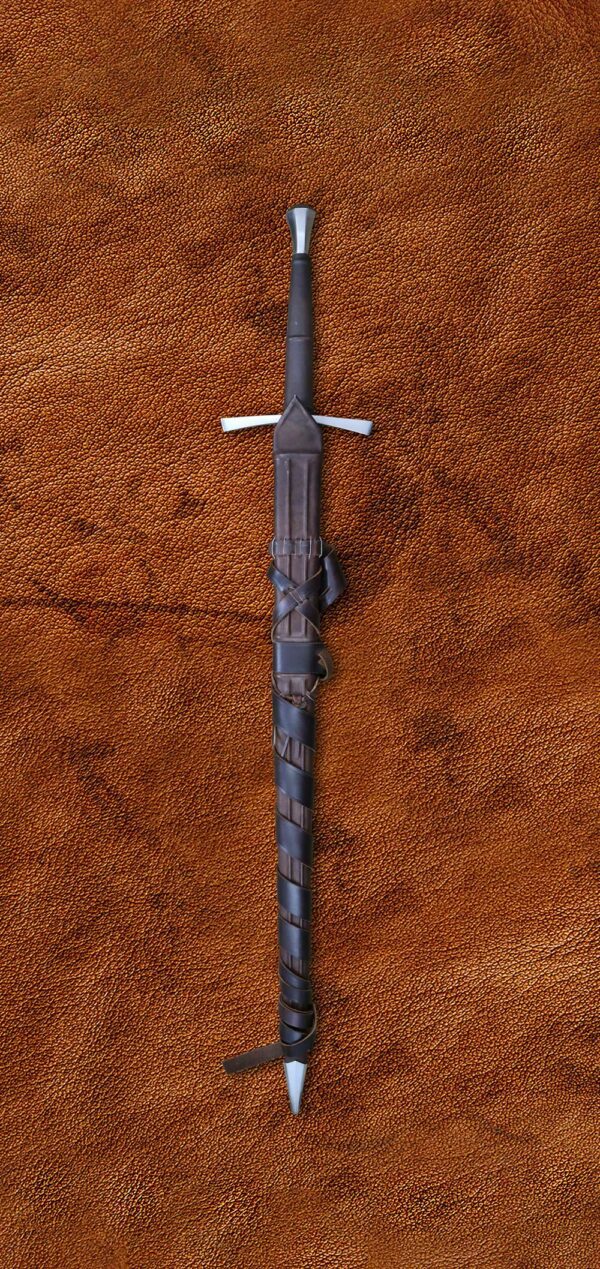
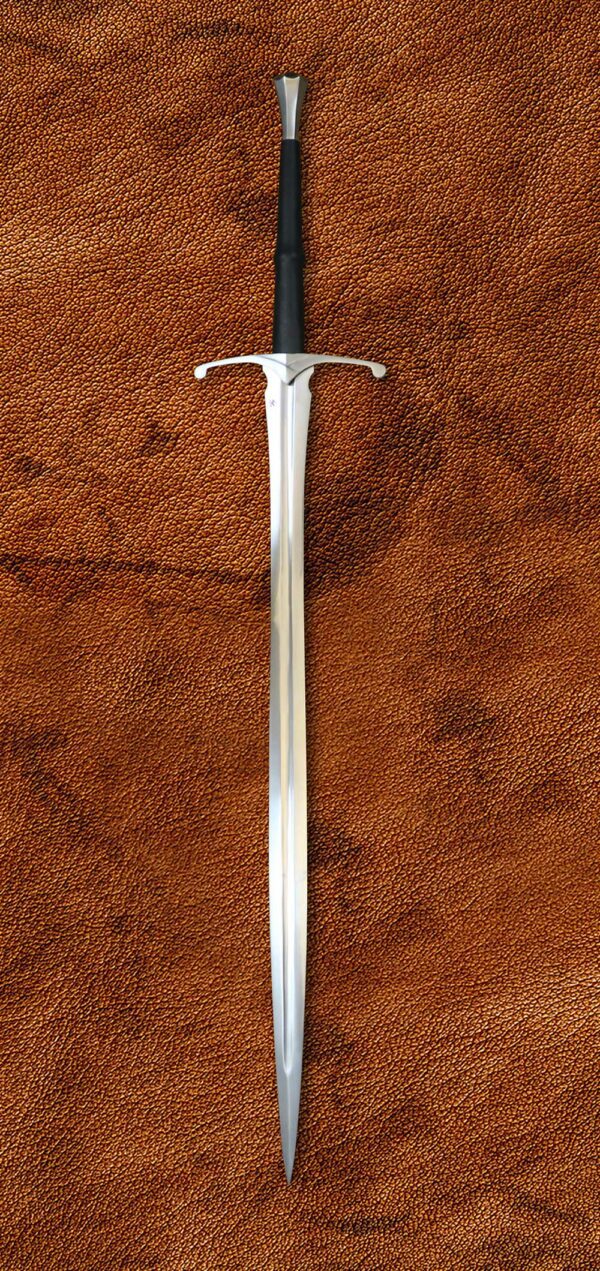
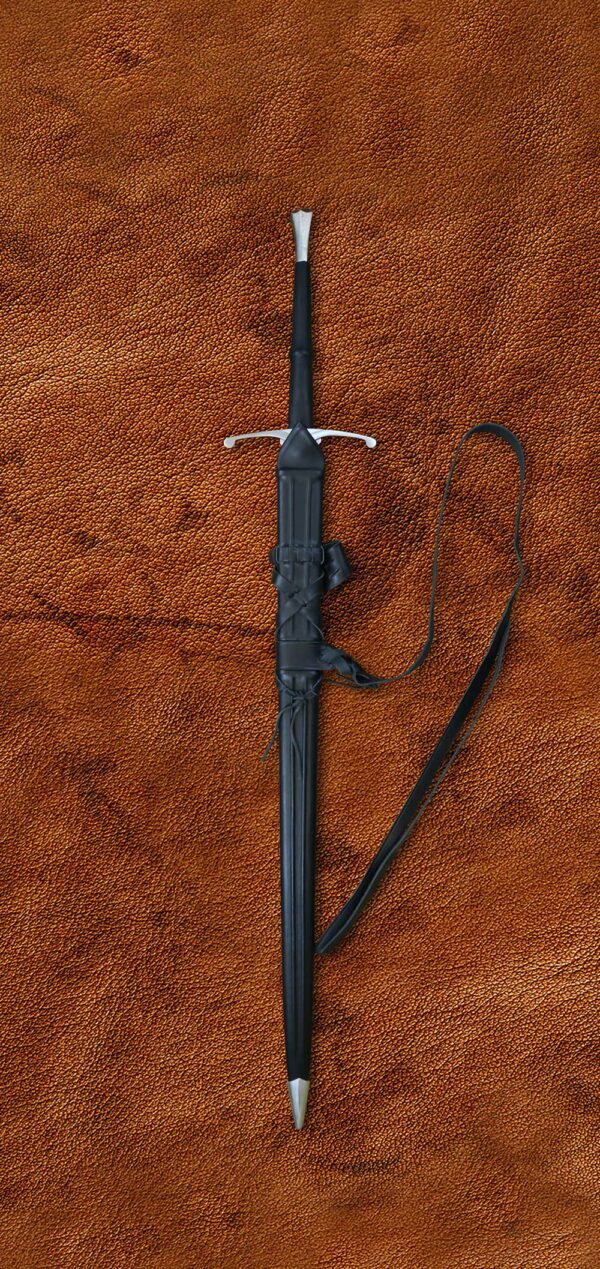
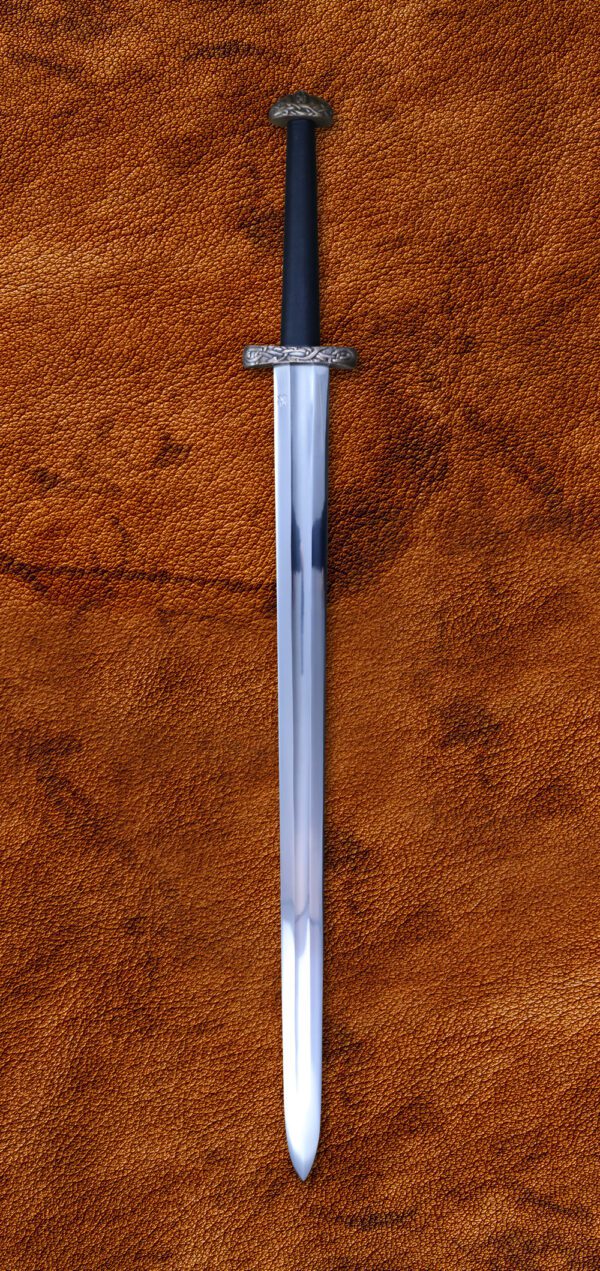
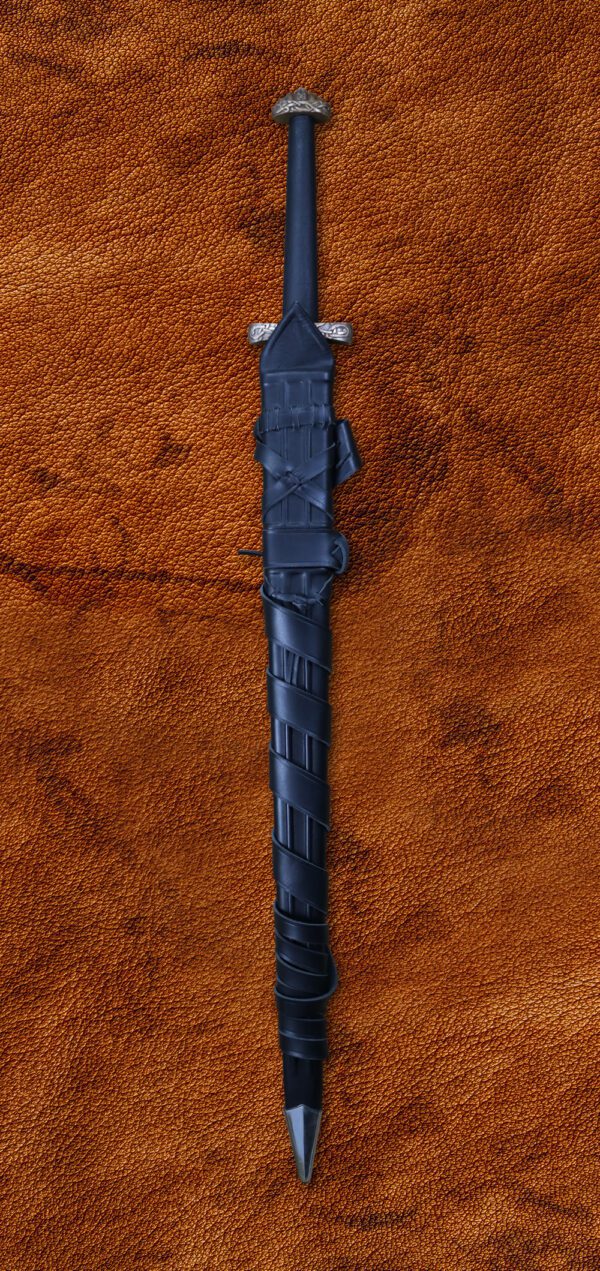
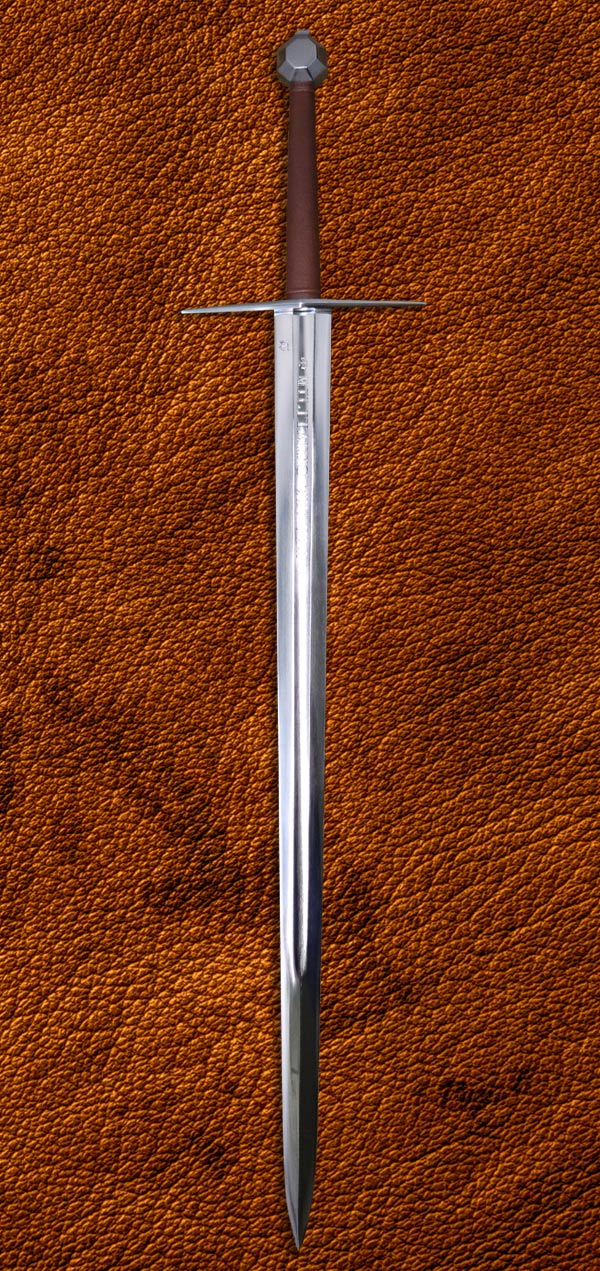
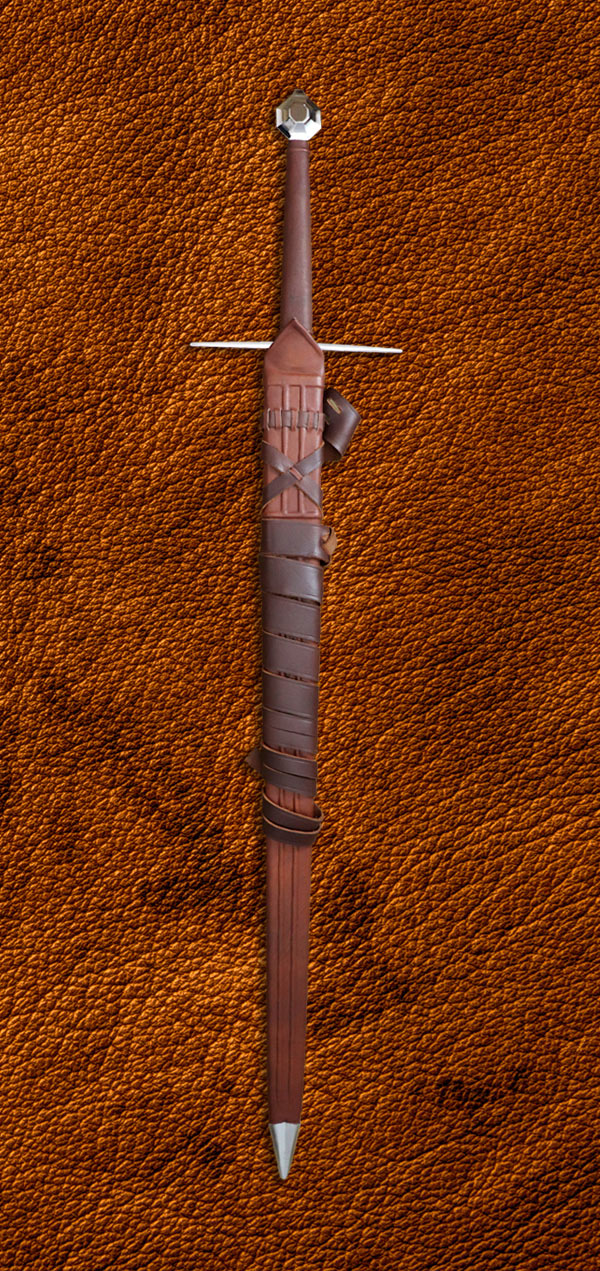
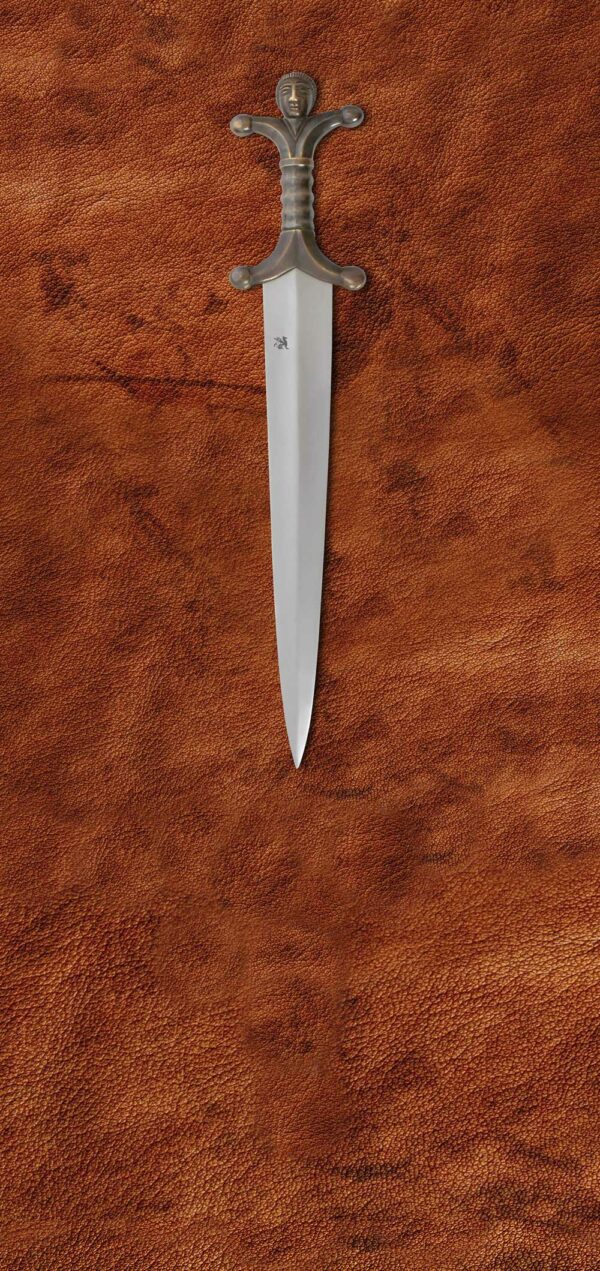
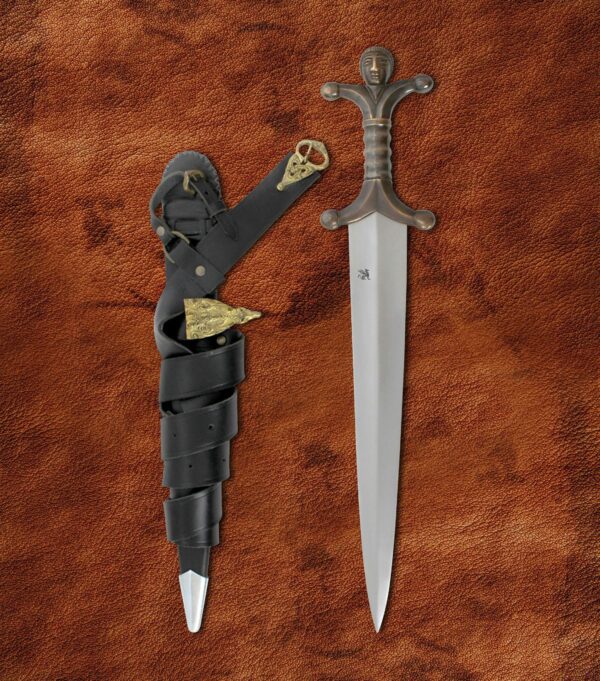
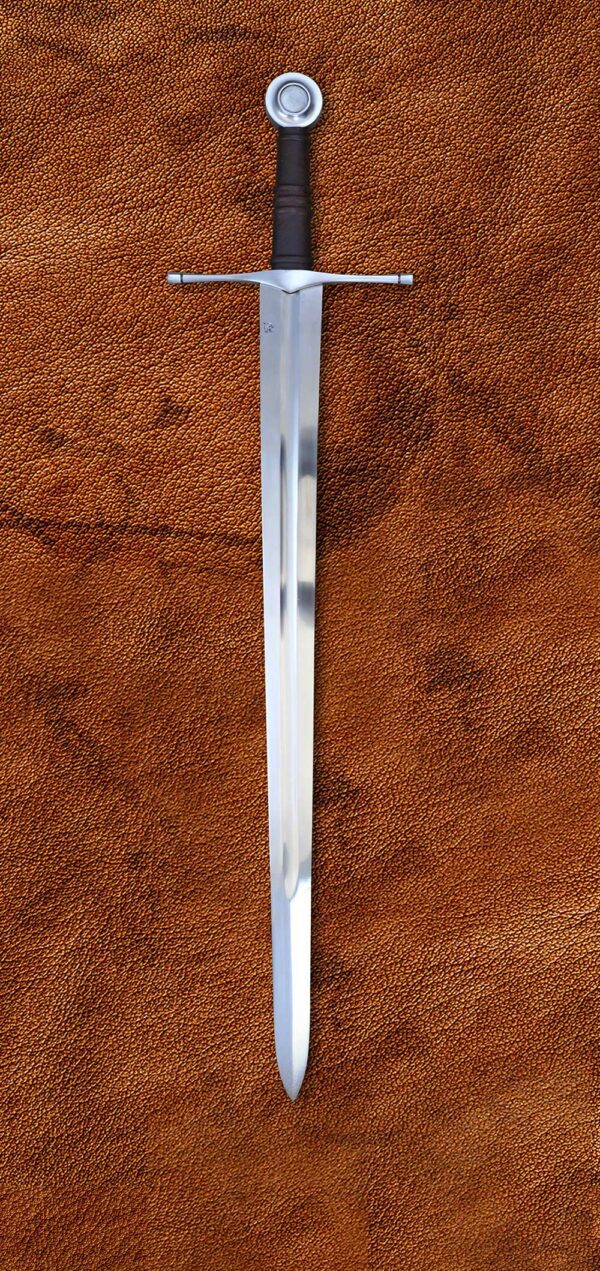
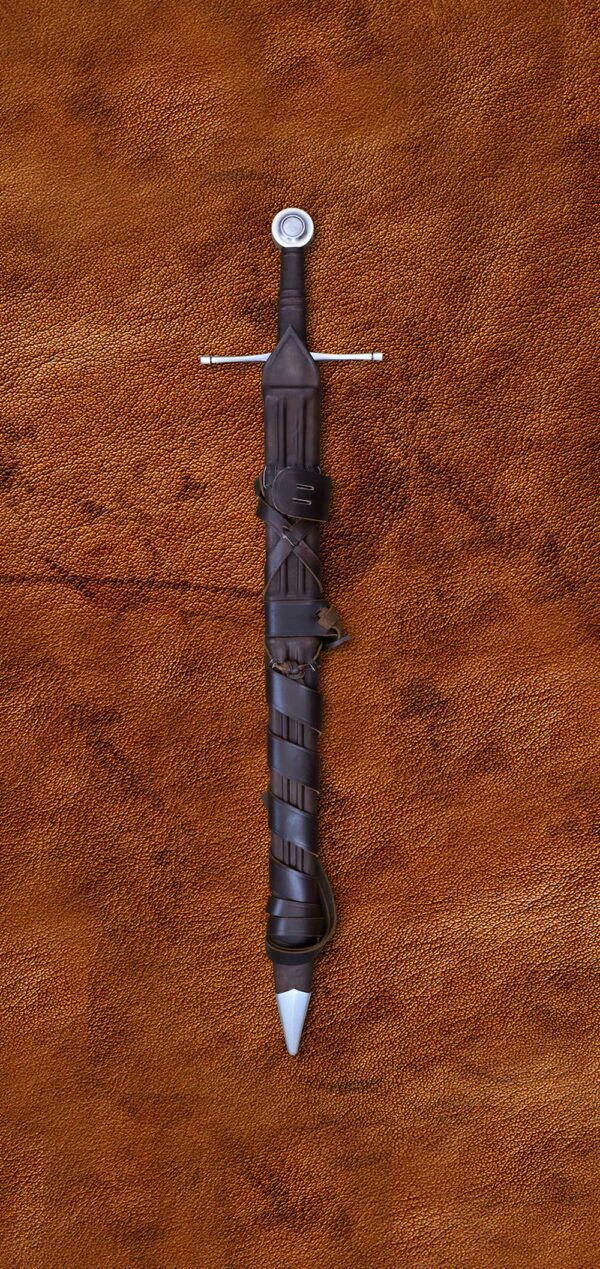
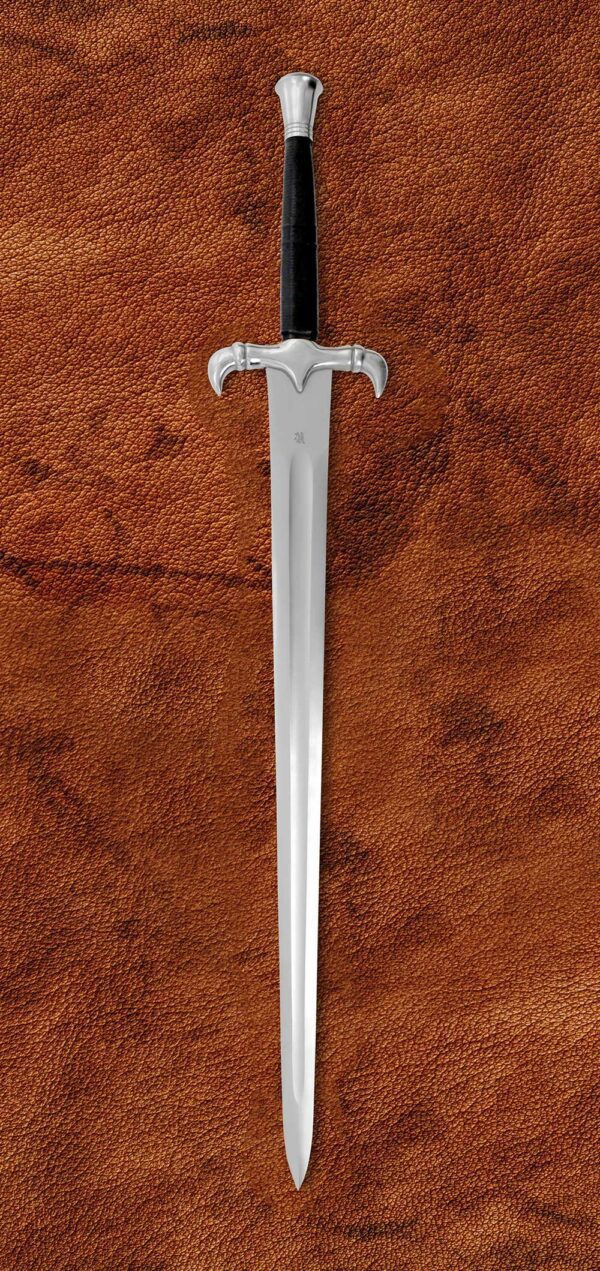
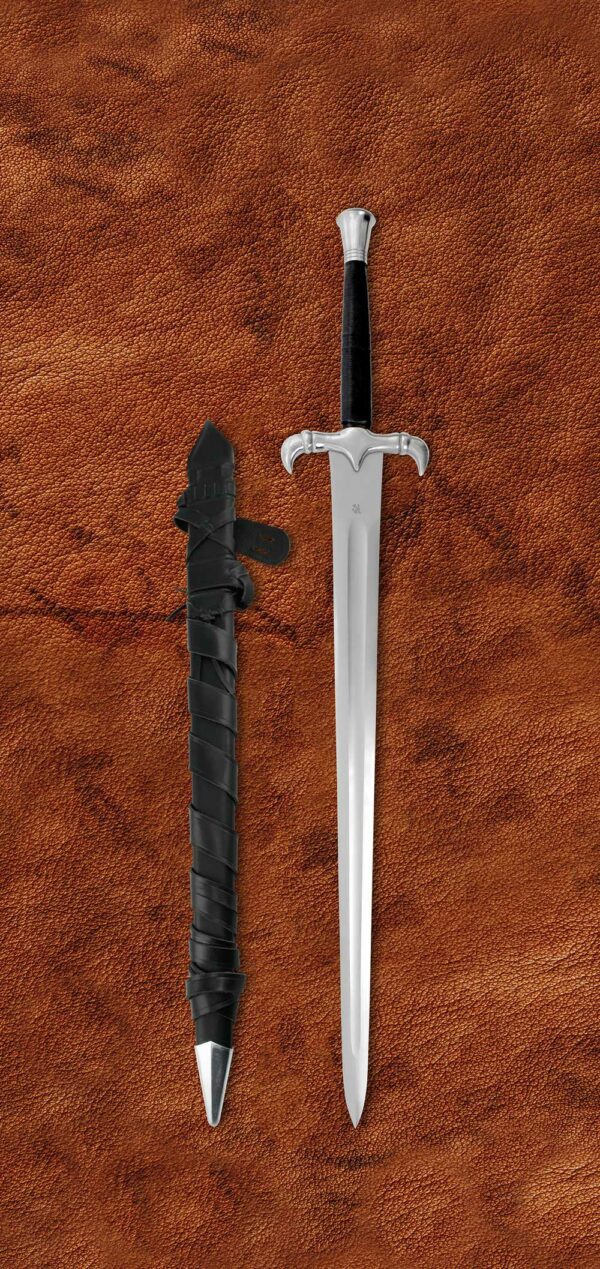
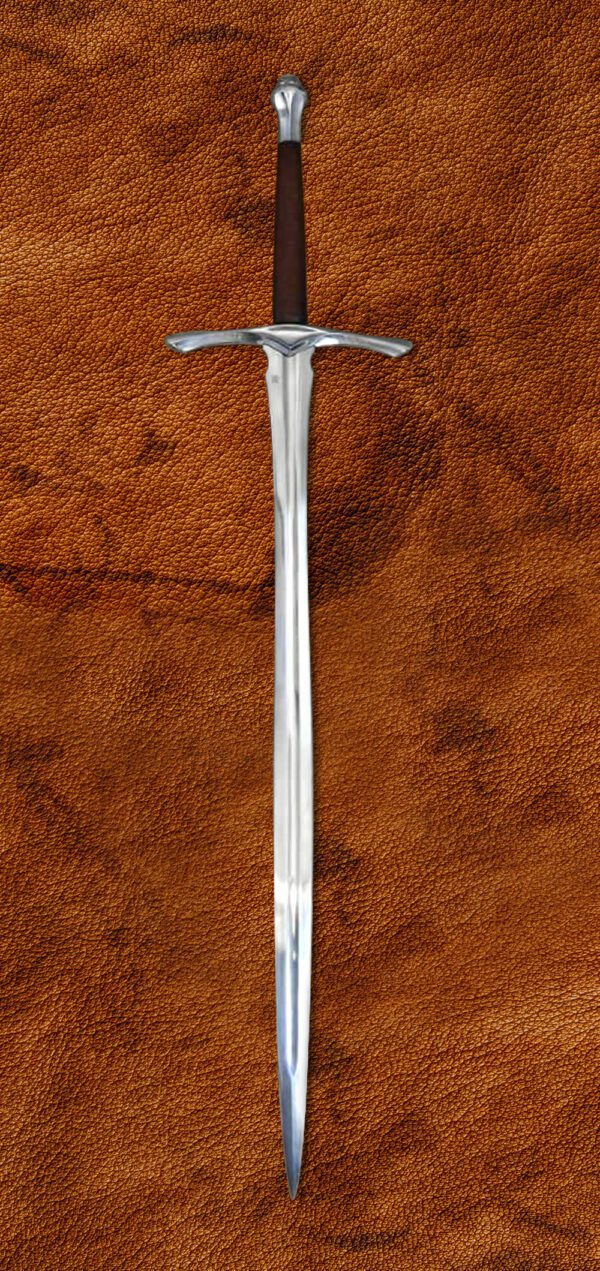
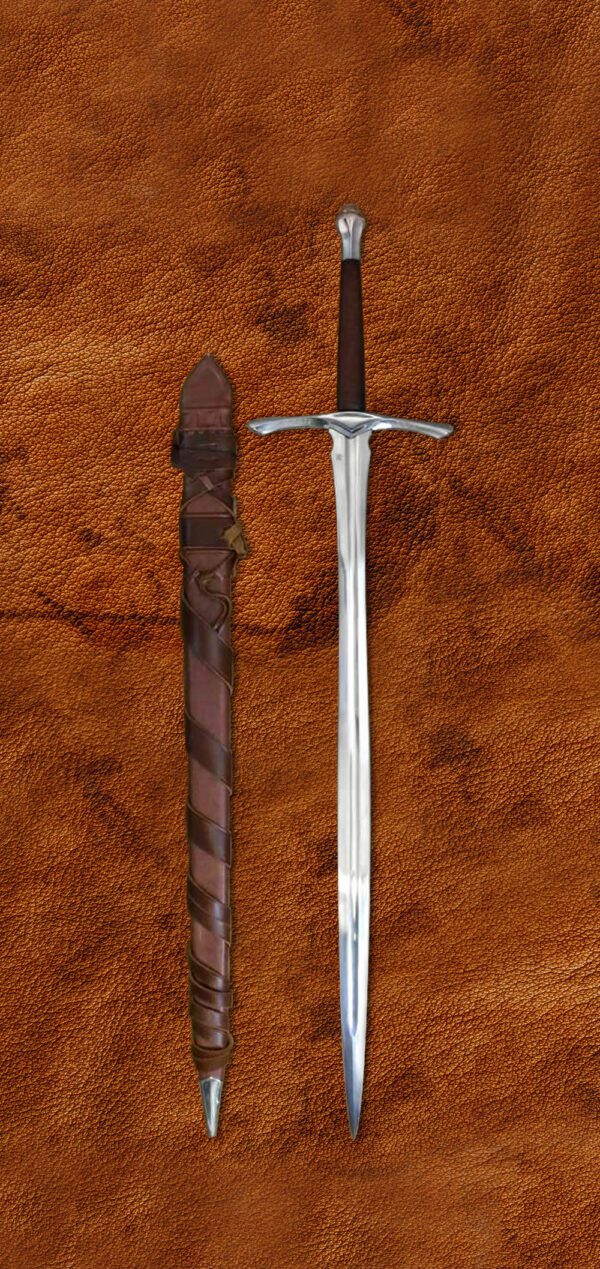
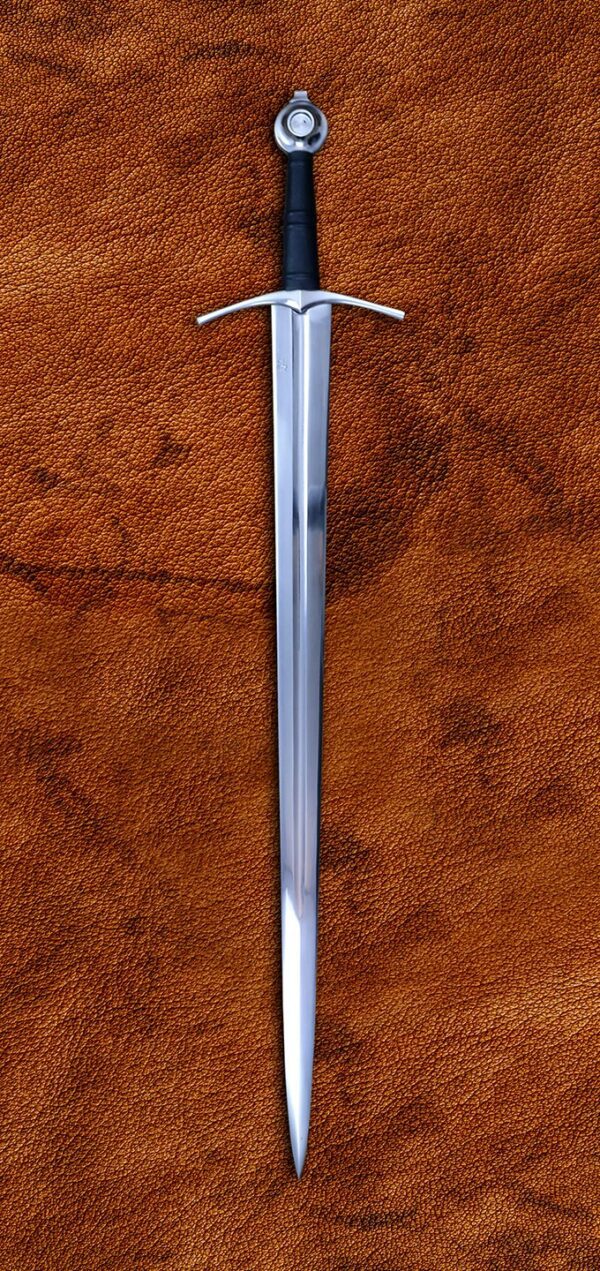
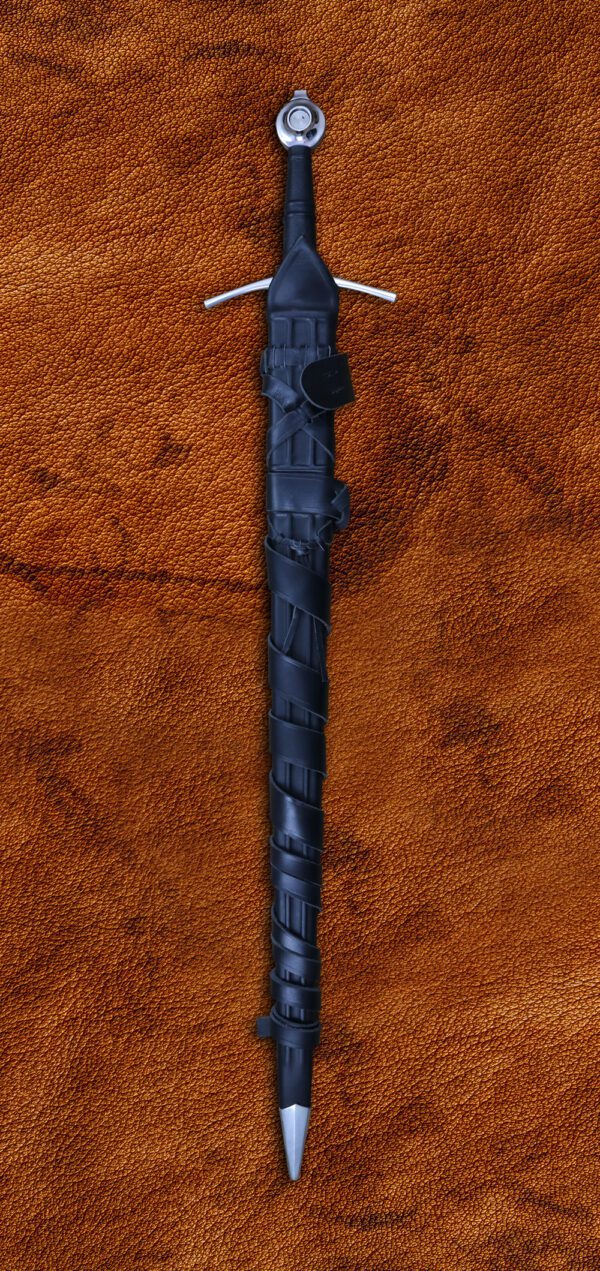
Skol, U.S.A –
After much online research and contemplation I finally chose the Darksword Armoury Viking 5 Lobe Sword and Scabbard/Belt combination. I was not disappointed in any way especially considering that many sites want you to buy just a scabbard for their swords which is more than I paid for the sword, scabbard and belt from Darksword.
The scabbard is very nice and upon opening the shipping box was greeted by the great odour of fresh leather. The scabbard colour matches the sword handgrip very nicely. The sword itself is almost flawless and feels very natural in the hand. The blade, cross guard and pommel were all nicely polished with no blemishes to be found. The grip is very tight and I cannot feel any movement. I haven’t had a chance to chop away at anything heavier than cardboard but I don’t expect the grip to loosen up any. I would give the sword an easy 9 1/2 out of 10 with the only minor criticism of where the blade attaches into the cross guard the inset on the cross guard is a tiny bit rough. This criticism is very nit-picky and I am going to start saving to buy another sword from Darksword, perhaps a crusader or two-handed sword.
I am related to the first Viking King and I can imagine wielding this fine blade along side him in battle or a raiding party daring the Valkyries to take me.
Justin (verified owner) –
My favorite style of viking era sword. The only difficultly i had choosing this was because they are so many on the site i like. But i got to wanting a viking sword and decided on this one firstout of the group. Very beautiful very durable i have no complaints with it
https://youtu.be/rxEv7LWNTlY
Dave Shaw (verified owner) –
I looked around alot before I chose this sword, between quality and price I am not disappointed and would recommend this sword.
Both the sword and the scabbard look great and are well made. There were only a couple small flaws on the sword; first, the slot in the guard around the blade was roughly cut and asymmetric, but only noticeable on close inspection; second, the sharpening at the tip was rough and needed to be smoothed with a stone.
Sword feels very solid, has good weight and balance and handles well.
DarkSword maks a fine sword, thank you.
Patrick St-pierre (verified owner) –
I’ve order this sword a few years ago, and it has gone trough a few years of practice, “abuse”, cutting, rehappening, etc. It has held up extraordinary well, and after several years, is still an exceptional piece of craftmanship.